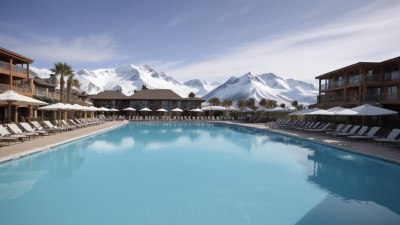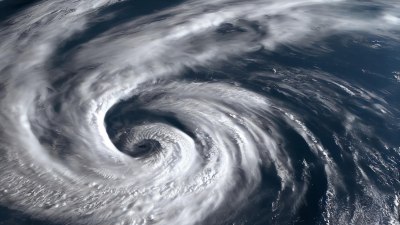Why Swimming Pools at Resorts Are Either Too Warm or Arctic Cold
Explore the reasons behind temperature extremes in resort swimming pools and how it affects your vacation experience.

This image was created with the assistance of Freepik
Swimming pools at resorts are often the centerpiece of relaxation and recreation, providing guests with a refreshing escape from the heat. However, many travelers have likely experienced the disappointment of finding that the pool they eagerly anticipated is either too warm or, conversely, so cold it feels like jumping into a bracing cold sea. Understanding the factors that contribute to these temperature extremes can shed light on the challenges resorts face in maintaining an ideal swimming environment.
Temperature Preferences Among Guests
The first variable in the equation is the diverse range of temperature preferences among guests. Some people enjoy a warm pool, reminiscent of a therapeutic hot spring, while others prefer a cooler environment, especially in hot climates. This variance complicates pool temperature regulation, as resorts aim to satisfy as many guests as possible. Research shows that the ideal temperature for a swimming pool is often cited to be between 78°F and 82°F, but not everyone agrees on what feels comfortable.
Seasonal Changes and Environmental Factors
Another contributing factor to pool temperature is seasonal and geographical differences. Resorts located in tropical environments may face challenges in keeping pools cool during peak summer months, where ambient temperatures soar. On the flip side, resorts in cooler climates may struggle to keep the pool warm enough for guest enjoyment in the winter months. Both scenarios can lead to frustrated guests and inconsistent temperature regulation.
Pool Heating and Cooling Systems
A key component of maintaining pool temperature is the heating and cooling systems in place. Many resorts utilize heaters to warm pool water, but these systems have limits. If the ambient temperature is particularly low, or if many guests are utilizing the pool simultaneously, it may be hard for heaters to keep up. Conversely, during intense summer heat, cooling systems may be inadequate to maintain a comfortable swimming temperature. These systems vary widely in efficiency and performance, affecting the overall experience for guests.
Maintenance and Water Circulation
Regular maintenance and proper water circulation are also crucial in regulating pool temperature. If a pool is not cleaned regularly, the water can become stagnant, leading to temperature fluctuations that are uncomfortable for swimmers. Efficient circulation systems can help distribute heat evenly throughout the pool, but if these systems are malfunctioning, certain areas may be significantly warmer or colder. Additionally, debris can clog filters and impede water circulation, exacerbating temperature challenges.
Human Activity and Usage
The level of human activity in a pool can drastically influence its temperature as well. When many guests are enjoying the pool, their body heat can warm the water. However, in spacious resorts where the pool is underutilized, the water can cool quickly, especially at night. The different usage patterns of pools can drastically alter how warm or cold the water feels at any given time, adding another layer of complexity for resort managers striving for a pleasant experience.
Architectural Design
The architectural design of the pool area can also play a role in temperature regulation. Pools that are in open areas, exposed to wind, may lose heat more rapidly than those surrounded by buildings or shrubs that can act as windbreaks. Moreover, the depth of the pool can influence how quickly it heats up or cools down; shallower pools typically warm quicker than deeper ones. Landscape architects must consider these factors when designing pool areas to ensure guest comfort year-round.
Water Quality and Filtration
Water quality also ties into the temperature experiences of pool-goers. Balanced chemical levels in pool water can help manage temperature by ensuring that the heating systems function properly. For example, if the pH levels of the pool water are not balanced, it can impede the effectiveness of heating systems, causing guests to feel discomfort. Regular tests and adjustments are essential for maintaining optimal swimming conditions and preventing temperature-related complaints.
Feedback and Adaptation
Resorts must also take guest feedback into account to adapt their pool temperature strategies. In some cases, regular surveys and reviews can reveal patterns in guest comfort levels and preferences that can inform adjustments for future seasons. Some resorts may invest in smart-technology solutions that allow for more precise temperature monitoring and management, enhancing the overall experience for guests.
Strategies for Improvement
To combat the issues of extreme temperatures, many resorts are developing new strategies. Some are investing in geothermal heating systems that use the earth's natural heat to warm pools without excessive energy consumption. Others are turning towards solar heating solutions, which are both energy-efficient and sustainable. Additionally, implementing more advanced control systems that allow for real-time monitoring can help ensure pools stay within the preferred temperature range.
The dual-ended struggle of resort managers to keep swimming pools at the ideal temperature continues to be a complex issue influenced by various factors, from guest preferences to technical capabilities. Understanding these elements can help guests manage their expectations and enhance their overall vacation experience. In the pursuit of a perfect swim, both resorts and guests can benefit from clear communication on temperature expectations and consistent maintenance efforts to find the sweet spot between warm and cold. As resorts evolve and adapt to changing conditions and technologies, the hope is that the days of arctic cold and scorching hot pools will become a relic of the past, leading to a more enjoyable and comfortable swimming experience for all.











